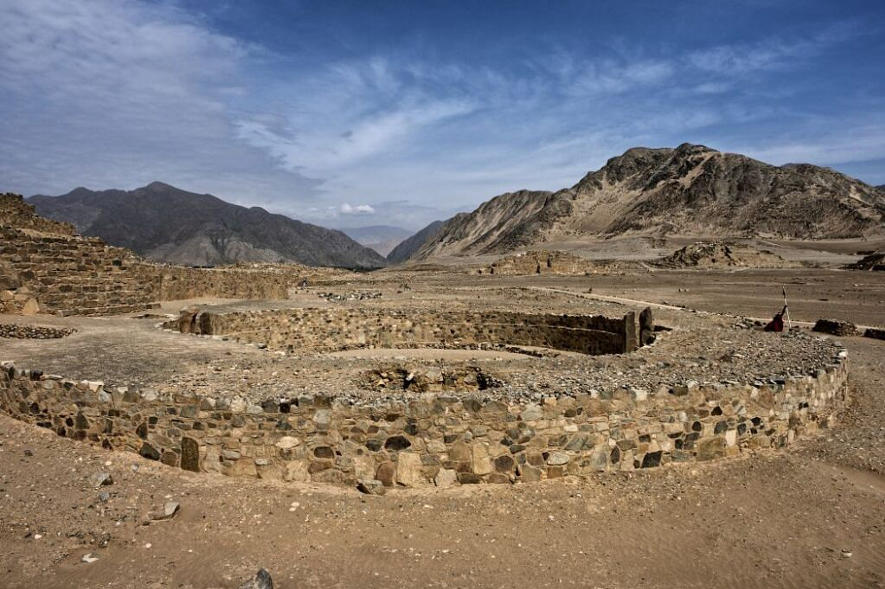What can you expect when visiting Caral, the oldest city in the Americas? A Canadian archaeologist shares her recent experience.
Recently, I had the pleasure to explore the oldest city in the Americas, Caral, as Peru slowly begins to reopen for tourism during the COVID-19 pandemic.
Caral is approximately three hours by road from Lima.

Caral: a massive site

At the site, we were welcomed by the masked staff of Caral, many of whom are archaeologists themselves. All visitors had to sign the guest book with our name, ID number, and our temperature (that was taken again). A face shield was not required to enter but you do need your mask. After signing in, they organized us into groups of 4-8 people with a tour guide to see the site. At all times, we were a far distance from the group in front of us and behind us. This was especially helpful for hearing the tour guide and for ensuring our safety.
The site itself is massive and incredible. The Caral people lasted from 3000-1800 BC which is incredible considering that this civilization was so complex and stratified to create huge and impressive temples. To give you an idea of how old this site is, they did not produce any ceramics or metals because they weren’t invented yet. However, they did carve out tools, utensils, and instruments from rocks, shells, and animal bones.
As an archaeologist myself, I was most impressed with the corners and edges of the stairs and sides of the buildings. They were all consistently 90 degrees in angle and are sharp. The walls were also impressively flat and smooth which was uncommon for later civilizations. There are no defensive walls present at Caral which may indicate that they were a peaceful civilization and there were no conflicts with other groups. This would make sense as they were the only highly complex group during their time.
It’s important to keep in mind that the site that we know as Caral is one of several Caral settlements. The one that we most often hear about is known as the main religious center and so it is grand and we see many communal areas and musical artifacts (instruments, such as flutes, made with animal bones). For this reason, there was more effort made by the Caral people to ensure that it was pristine. There are at least 20 more settlements that were residential for more common people. We were able to stop by one of the settlements named Aspero.
Aspero: a residential settlement

Aspero is approximately 40 minutes from the main Caral site and is located on the beach. They were known as the “fish people” or the “city of fish” because the Caral people who lived there were fishermen. While briefly visiting this site, my tour guide estimated that approximately 1,000 people occupied this area at the culture’s peak.
When you enter this site, it is very similar to the main Caral site in which your temperature will be taken and you will need to sign their guest book and record your temperature number. The only difference is that you also need to take your temperature and record it in their book as you exit too.

Aspero has an excellent mini-museum and interpretation area to learn more about the site and see real artifacts like seashells used as fish hooks and the different types of netting they used to capture fish. Unfortunately we had no time to see the architecture of Aspero but I plan to make a separate trip because the mini-museum alone was very impressive.
In my personal opinion, if I had no prior knowledge of either sites, Aspero did a better job at explaining this Caral settlement with their mini-museum and presentation than the main Caral site. However, if you do some research ahead of time, you will still be blown away by the advanced skills the Caral people had for both.

It is an incredible and overlooked region that deserves more tourism exposure and has a rich history and food culture worth exploring.
Dawn Brookes
Dawn Brookes is an archaeologist from Alberta, Canada, who has been involved with archaeological projects in Peru since 2014. Today she lives in Lima and is completing her master’s in ancient Peruvian burials which will later turn into a PhD.



